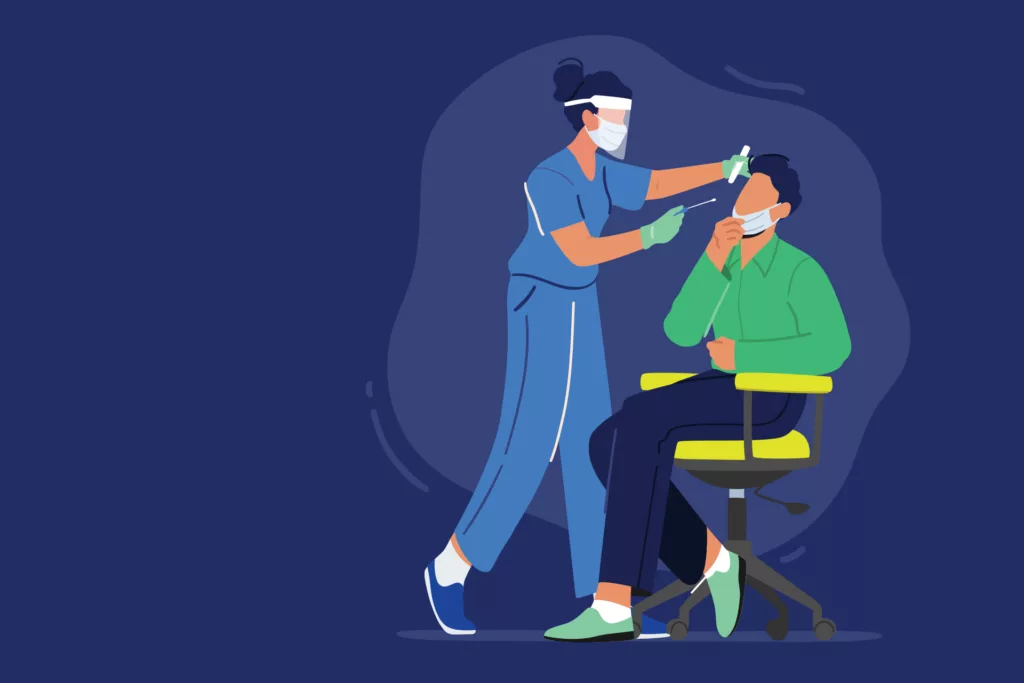Some say things get better with age. Cheese, wine, and whiskey are a few examples that come to mind. Unfortunately, your vision is not one of them. As we enter our forties, most if not all of us will experience the natural loss of near vision, also known as presbyopia. Coined from the Greek terms “presbys” (old man) and “ops” (eye), this condition is practically unavoidable. Affecting your ability to focus on near objects and to perform near visual tasks, presbyopia results from the progressive decrease in the accommodation mechanism of the eye. As you age, the natural lens in your eye begins to lose elasticity, rendering it less flexible to become rounded for tasks like reading. The good news is that this natural decline in near vision will plateau when you hit your sixties and not get any worse.
Affecting close to 128 million people, presbyopia is the most common cause of visual impairment in the United States. Some of the prominent signs and symptoms include the need for more light while reading, blurred vision at a normal reading distance, the need to hold reading material at arm’s length, headaches from doing close work, and eye strain. Traditionally, treatment of presbyopia has been accomplished through the use of eyeglasses, corrective lenses, or elective surgical procedures. Until now…
Wait, what?
Yes, there’s an eye drop that may help you see up close. Accompanied by a full-blown advertisement campaign touting it as an alternative to traditional treatments, Vuity is the first drug approved by the FDA for the treatment of presbyopia in adults. The active ingredient, pilocarpine, has been used for more than 100 years to treat glaucoma and was previously approved for other ocular uses such as lowering intraocular pressure and pupil constriction following dilation. The mechanism of action for Vuity involves contraction of the iris sphincter muscle, constricting the pupil to improve near and intermediate visual acuity while maintaining some pupillary response to light. Vuity has an onset of action of 15 minutes with a duration of approximately 6 hours, however the dosage is limited to only one drop in each eye once daily. In addition, the manufacturer warns that special caution should be taken when driving at night or performing other activities with limited light.
Vuity was evaluated in 375 patients with presbyopia by two randomized, double-masked, vehicle-controlled studies (GEMINI 1 and GEMINI 2) of 30 days duration. It’s interesting to note the relatively small study size given presbyopia is not a rare disorder. These clinical trials were limited to patients aged 40 to 55 without any type of glaucoma, ocular hypertension, corneal abnormalities, narrow iridocorneal angles, permanent punctal plugs or history of punctal cautery. It’s important to note that how the drug performs in patients over 55 years of age or with any of those listed conditions is unknown and there are not any ongoing clinical trials for Vuity to find out. It’s likely to only help patients with milder presbyopia, but post-marketing data will need to be monitored.
Medical Necessity or Convenience?
The American Medical Association has defined Medical Necessity as: “Health care services or products that a prudent physician would provide to a patient for the purpose of preventing, diagnosing or treating an illness, injury, disease or its symptoms in a manner that is: (a) in accordance with generally accepted standards of medical practice; (b) clinically appropriate in terms of type, frequency, extent, site, and duration; and (c) not primarily for the economic benefit of the health plans and purchasers or for the convenience of the patient, treating physician, or other health care provider.”
Marketed as a product to allow patients to see objects up close without the need for eyeglasses or contact lenses, Vuity has a window of effectiveness which is limited to only 6 hours per day. As a result, other treatments such as eyeglasses or contact lenses still need to be utilized to fill that treatment gap. Add in the fact that Vuity has not been proven to alter or slow down the natural course of presbyopia and this product appears to only be beneficial for patient convenience or cosmetic reasons, especially for those that use eyeglasses.
Cost of Convenience
There is a lot going on with Vuity that might give pause to patients seeking a way to ditch their readers. Currently, the drug retails for around $80 per bottle which should last about a month if used according to the manufacturer’s labeled instructions. However, like with most drugs, there are possible side effects. As stated in the package insert, the most common side effects include headache, eye redness, and difficulty seeing at night. According to many online reviews and testimonies, these side effects occur frequently. Although rare, the risk of retinal detachment is also a concerning adverse event. Although not necessarily called out by the manufacturer, there are multiple online reports of Vuity making everything appear a little darker when used. This would be attributed to the mechanism of action of Vuity, which causes constriction of the pupils and thus restricts the entrance of light. Although the manufacturer did provide a clear warning which states the product should not be used while driving at night or when performing hazardous activities in poor lighting, it probably goes to reason that driving early in the morning or in the late evening would be troublesome as well.
While the manufacturer claims clinical trials demonstrated 6 hours of effectiveness, multiple online reports state that the eyedrops only work for around 2 to 3 hours. There can be a whole host of reasons why. Perhaps we could start by discussing if the drug is being used by a patient that does not fit the idealistic criteria for inclusion into the clinical trials for Vuity. Those study groups were limited to ages 40 to 55 years old without specific eye conditions. What about that 62-year-old patient with an unknown underlying eye condition such as early stages of glaucoma? One likely scenario to occur is that Vuity is prescribed by a primary care doctor, without the patient undergoing a full eye examination by an eye specialist. The patient could be suffering from eye conditions other than presbyopia and if an eye specialist is not involved with the patient’s treatment, then the use of Vuity could delay treatment for an undiagnosed condition. Let’s not forget about the increased use of online prescribing by a virtual doctor where eye conditions could be easily missed without proper in-office diagnostics.
Also stated in the package insert, but not mentioned in the TV ad, is the risk of serious eye and vision problems with the use of this product. Let’s revisit that active ingredient in Vuity, pilocarpine, a drug that has been around since the 1870s to treat glaucoma. Today, however, pilocarpine is almost never used to manage glaucoma because of the abundant side effects and more importantly, an increased risk of retinal detachment, a condition that can cause blindness.
Sorry, Not Covered
Traditionally, treatments for presbyopia are covered via vision benefits which are often limited to some coverage of eyeglasses and contact lenses. Health plans and payors should be aware of the limitations of these new pharmacological treatments for a condition which inevitably will affect most if not all patients as they age into their 40s. Coverage under the pharmacy benefit based on medical necessity should not apply to these drug treatments which are really just a temporary and convenient (and possibly more cosmetically pleasing) alternative to eyeglasses and contact lenses, which are still the safer and more cost-effective approach. Until a product to treat presbyopia becomes available which alters this natural course of aging or possibly used as a full replacement for traditional treatments this new emerging therapeutic class does not belong within the scope of pharmacy benefit coverage.
A New Market Awaits
Although Vuity is currently the only player, the pharmacological treatment of presbyopia appears to be a market bursting with potential as several other eye drops are currently in the pipeline and undergoing clinical trials. Many of them are leveraging the miotic effect utilized by Vuity with either pilocarpine or other similar treatments currently used for glaucoma. A handful of these treatments are slated to obtain FDA-approval over the next few years.
Orasis Pharmaceuticals’ CSF-1, a combination of pilocarpine and diclofenac, is currently undergoing Phase III trials and they are expecting to file with the FDA later this year. Another play on pilocarpine, but with an innovative delivery system, Eyenovia’s MicroLine, is also currently in Phase III trials and might file an NDA before the end of 2022. Visus Therapeutics is in the presbyopia game as well with two different formulations of a brimonidine tartrate/carbachol combination that recently kicked off Phase III trials, although FDA approval might not be possible until 2024. Novartis has a treatment (UNR844) currently in Phase II clinical trials which utilizes a much different mechanism of action compared to the others previously mentioned. UNR844, a lipoic acid choline ester which works by increasing lens elasticity and thereby improving near vision, is projected to file for FDA approval sometime in 2024.
There are at least 14 different pharmacological treatments currently in some stage of clinical trial vying for the opportunity to enter a potential market that currently exceeds 120 million people in the US alone. This is a new frontier which may have additional players joining in if the market embraces the drug treatment option for this unavoidable condition. Managing side effects, limitations of therapy, along with the cost burden of pharmacological treatments will be something that patients, providers and payors will need to navigate as these agents continue to enter the marketplace.







